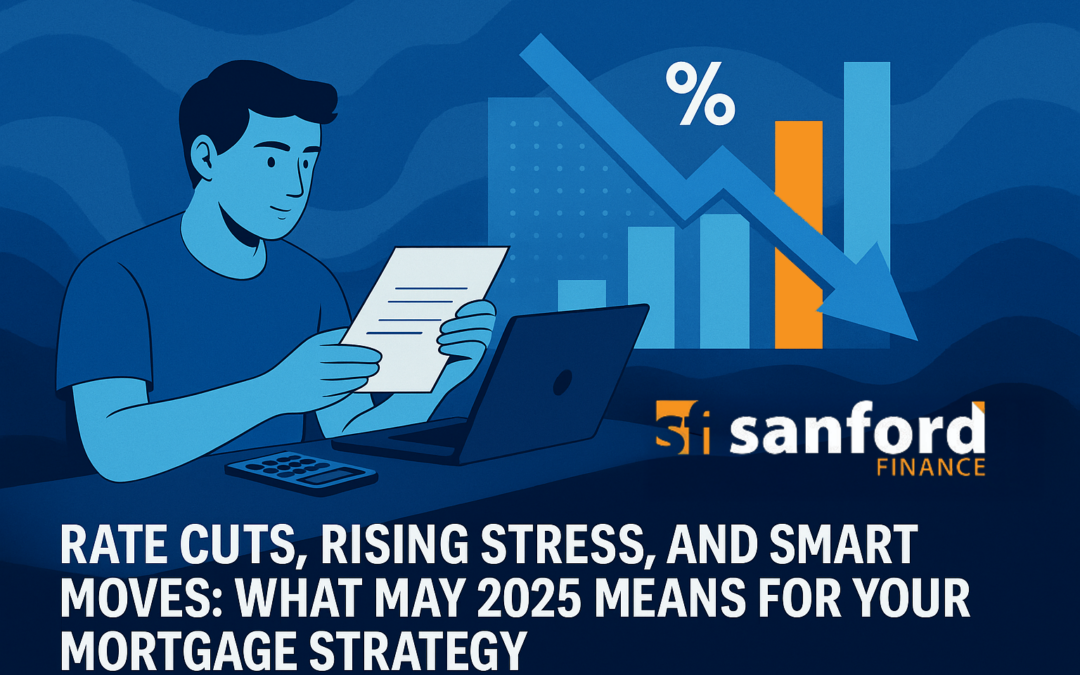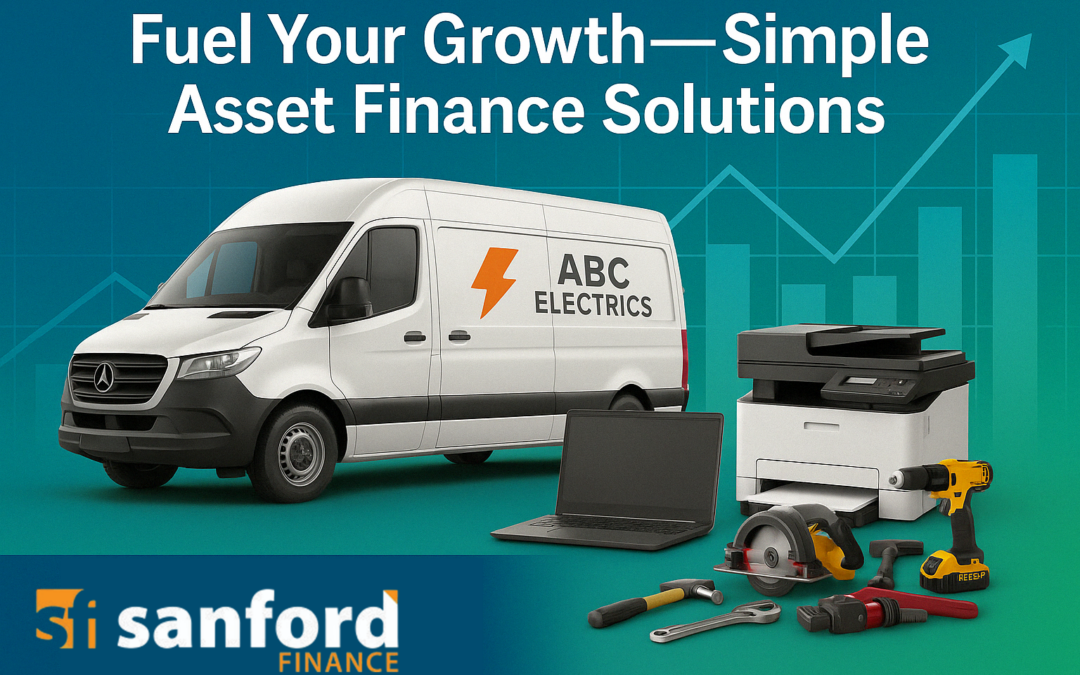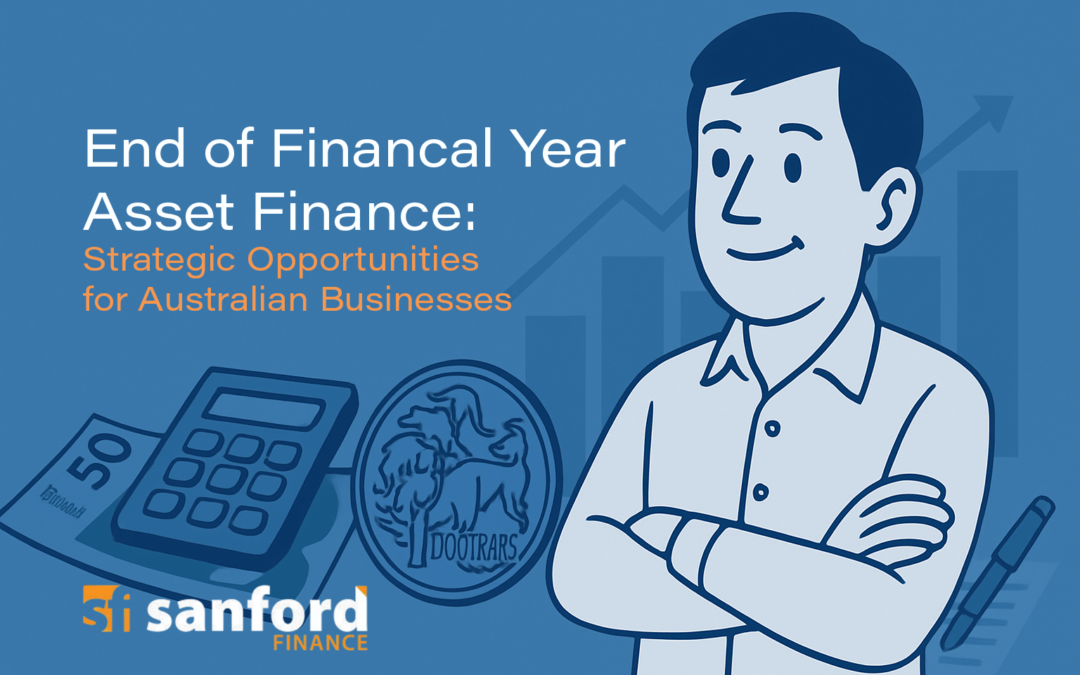
May 1, 2025 | Bridging Loan, Debt Consolidation, First Home Buyers, Investment Property, Property Market, Self Managed Super Fund (SMSF)
Inflation has fallen below 3%, setting the stage for potential RBA rate cuts. While 1.45 million Australians still face mortgage stress, the changing economic landscape offers new opportunities in refinancing, SMSF property investment, bridging finance, and debt consolidation. Now is the ideal time to review your mortgage strategy.
The economic tide is finally turning for Australian borrowers. With inflation easing below 3% for the first time in two years and the Reserve Bank of Australia (RBA) hinting at rate cuts, May 2025 could mark a pivotal moment for homeowners and investors alike. After an extended period of high interest rates, it’s time to reassess your mortgage strategy and position yourself for the changing financial landscape.
Current Economic Climate: A Shifting Landscape
Recent data reveals that Australia’s core inflation, measured by the RBA’s preferred trimmed mean, has fallen to 2.9%—finally within the central bank’s 2–3% target range for the first time since late 2021. Headline inflation remains steady at 2.4% annually. These figures strengthen expectations for potential interest rate cuts in the coming months.
However, despite this positive outlook, many Australians continue to grapple with financial pressure. As of March 2025, approximately 1.45 million mortgage holders are still considered “at risk,” with 990,000 classified as “extremely at risk.” While these numbers represent a modest decline following the RBA’s February adjustments, they highlight the ongoing strain on household budgets.
What This Means for Different Borrowers
For Existing Homeowners
If you’ve been feeling trapped in “mortgage prison” due to tightened lending standards and property valuation drops, the climate is changing. With inflation under control and potential rate cuts on the horizon, lenders may start easing their assessment criteria. This could open refinancing opportunities that weren’t available during the high-rate environment.
For Property Investors
The investment landscape is showing early signs of activity. National Australia Bank (NAB) reported that demand for financed vehicles and equipment rose about 10% nationally in 2023 despite higher rates, indicating growing business confidence. This economic resilience may translate to increased stability in the property investment market as well.
For Self-Managed Super Fund (SMSF) Investors
SMSFs continue to represent a significant avenue for property investment. According to the ATO, SMSFs held substantial cash investments as of late 2024, indicating strong positioning to capitalize on property opportunities. However, be aware of proposed regulatory changes, including the potential Division 296 tax on superannuation balances exceeding $3 million (scheduled for July 2025).
Strategic Options to Consider This May
1. Refinancing Smarter, Not Harder
With economic indicators improving, May 2025 presents an opportune moment to review your mortgage. You may now qualify for better terms than 12 months ago, even if you were previously rejected for refinancing. Banks are also competing more aggressively for quality borrowers as their lending appetite returns. Explore your options with Sanford Finance’s refinancing services.
2. Reassessing Fixed vs. Variable Loans
The fixed-rate mortgage cliff that dominated headlines in 2023–24 has largely passed, but the question remains relevant: should you fix your rate now or stay variable to benefit from potential rate cuts? The answer depends on your financial situation, but with cuts potentially on the horizon, variable rates may offer more immediate benefits for many borrowers. Sanford Finance provides insights on managing expiring fixed rates.
3. Using SMSFs for Property Investment
SMSFs continue to be powerful vehicles for property investment, offering benefits like lower tax rates on rental income (15% or potentially 0% in retirement phase) and reduced capital gains tax implications. However, with increased ATO scrutiny on SMSF compliance—particularly regarding asset valuations and investment strategy diversification—proper professional guidance is essential. Learn more about purchasing property through an SMSF.
The ATO has intensified its focus on SMSF investment strategies, requiring them to be tailored to specific circumstances rather than using generic documents. As a trustee, regularly reviewing and updating your investment strategy is not just best practice—it’s a legal requirement.
4. Exploring Bridging Finance Solutions
Bridging loans have seen surging demand, with some non-bank lenders reporting a 360% increase in the first quarter of the 2025 financial year compared to 2023–24. These short-term financing solutions can be invaluable if you’re looking to seize a property opportunity before selling your existing home.
5. Debt Consolidation to Improve Cashflow
With the rising cost of living affecting household budgets, consolidating multiple debts into your mortgage could significantly improve your monthly cashflow. This strategy can be particularly effective as we transition to a potentially lower interest rate environment.
Moving Forward: What Should You Do Now?
Whether you’re feeling trapped by your current mortgage terms, considering an investment opportunity, or simply want to ensure you’re positioned optimally for the changing market, May 2025 is an ideal time to review your financial strategy.
The recovery from the post-COVID interest rate surge has been long and challenging for many Australian borrowers. As the RBA’s Assistant Governor Brad Jones noted in April 2024, “Small business lending has not grown over the past year,” and many SMEs have reported “significant challenges accessing bank funding on suitable terms.” However, major banks are now signaling a renewed appetite for lending, with Westpac remarking that “there’s never been a better time to say we’re open for business.”
For homeowners and investors alike, this shift in the lending environment creates both opportunities and complexities. Professional guidance has never been more valuable.
At Sanford Finance, we specialize in navigating these complex financial waters. Our team keeps abreast of regulatory changes, lending criteria shifts, and market opportunities to provide tailored advice for your specific situation.
Whether you’re interested in refinancing options, SMSF property strategies, or exploring how to leverage the changing interest rate environment to your advantage, we’re here to help you make informed decisions.
Contact Sanford Finance today for a no-obligation review of your lending strategy and position yourself to benefit from the changing financial landscape of 2025.
Note: This article is for informational purposes only and does not constitute financial advice. Please consult with a financial advisor to discuss your specific circumstances.

Apr 22, 2025 | Borrowing Power, Refinance
Asset Finance in 2025: Riding the Wave of Change
Let’s face it – trying to keep up with the asset finance landscape feels a bit like surfing in choppy waters these days. Just when you think you’ve got your balance, another wave of interest rate news hits!
As we cruise through 2025, one thing’s crystal clear: businesses like yours still need vehicles, equipment, and tech to grow, regardless of economic weather. Whether you’re a tradie looking to upgrade that ute that’s seen better days, a café owner eyeing that fancy new espresso machine, or a tech startup needing the latest gadgets, understanding how to finance these assets without giving yourself a financial headache is crucial.
So grab your favorite beverage (mine’s a flat white with an extra shot), and let’s chat about what’s really happening in asset finance right now and how you can make it work for your business.
What’s Hot (and What’s Not) in Asset Finance Right Now
Despite the economic rollercoaster we’ve been riding, Aussie businesses are still keen as mustard on asset finance. The numbers tell quite a story – motor vehicles are the rock stars of the financing world, making up about 35% of all new equipment funding. (No surprise there – who doesn’t need reliable wheels for their business?)
Here’s something interesting: the Reserve Bank’s data shows SME loans grew by a healthy 12% over the past year. That’s the good news. The not-so-great news? Most of that growth is happening with medium-sized businesses. Our smallest battlers – the microbusinesses and sole traders – haven’t seen much growth in financing at all. In fact, when you factor in inflation, they’re actually going backwards.
As my grandfather used to say, “The big end of town always gets served first.” Some things never change, eh?
Interest Rates: From Zero to Hero (or Villain?)
Remember those halcyon days of virtually free money circa 2020? When the RBA cash rate was a measly 0.10%? Those days feel about as distant as my high school graduation now.
The RBA took us on quite the journey – from near-zero to north of 4% in what felt like the blink of an eye. For business owners, it was like watching your gym membership suddenly quadruple in price while the equipment stayed exactly the same.
Small business loans jumped by about 3.1 percentage points during this wild ride. To put that in perspective: on a $100,000 equipment loan, that’s roughly an extra $3,100 in interest payments every year. Ouch!
But here’s the silver lining (finally, some good news!): inflation is cooling its heels, and the RBA has been dropping hints that we might be at or near the peak of interest rates. There’s light at the end of this expensive tunnel, folks. While we won’t see those rock-bottom 2020 rates again anytime soon, at least the days of constant rate hikes might be behind us. Time to breathe that sigh of relief!
David vs. Goliath: The Small Business Financing Struggle
If you’re running a small business or flying solo as a self-employed Aussie, you probably already know this truth: getting finance feels like you’re trying to join an exclusive club where the bouncer keeps changing the entry requirements.
Let me break down the real challenges you’re facing:
1. The Financial Strip-Search: Banks want to see everything – your business’s birth certificate, three generations of financial statements, and probably your Year 10 report card while they’re at it. For newer businesses or freelancers with up-and-down income, this is about as fun as a root canal.
2. Interest Rates That Make You Wince: Small businesses are looking at 7-10% interest rates on equipment loans these days. Remember when we thought 5% was steep? Those were the days!
3. No House? No Loan!: The classic Catch-22 of business lending – many banks still want your house as security. As one shadow treasurer eloquently put it, “You shouldn’t need to own your own home to start a business.” Yet here we are in 2025, and for many entrepreneurs without property, the door remains firmly shut.
4. Paperwork Mountain: Self-employed folks need to produce so much documentation that you could wallpaper your office with it. By the time you’ve gathered everything, that perfect business opportunity has often sailed right by.
The Australian Small Business and Family Enterprise Ombudsman has been highlighting these issues for years, but progress has been glacial at best.
Silver Linings: Where to Find Your Finance Win
Don’t throw in the towel just yet! There are actually some fantastic opportunities emerging in this market – you just need to know where to look:
1. The New Kids on the Block: Fintech and Non-Bank Lenders
While the big banks are doing their traditional slow waltz, a bunch of nimble fintech lenders and specialist asset financiers have crashed the party. These newcomers are:
- Using smart tech to assess your creditworthiness (beyond just your credit score)
- Getting applications processed faster than you can say “approved”
- Not always demanding your firstborn child (or house) as collateral
- Offering flexible repayment schedules that actually match your business cash flow
Yes, you might pay a bit more in interest, but when you need that equipment NOW and the bank is still reviewing your application from last month… well, you do the math!
The Australian Finance Industry Association (AFIA) has more information on alternative lenders if you’re interested in exploring this option.
2. Tax Breaks That Actually Help
The instant asset write-off party might be over, but don’t despair! The Small Business Energy Incentive is still going strong, offering an extra 20% tax deduction on eligible energy-efficient assets.
Think about it: tax savings + lower running costs + helping the planet = triple win! Whether it’s solar panels for your warehouse, a hybrid delivery van, or energy-efficient kitchen equipment for your restaurant, this incentive makes these investments significantly more affordable.
Check out our tax planning services to learn how we can help you maximize these benefits.
3. Banks Suddenly Remember Small Businesses Exist
Call it competition or fear of losing market share, but the big banks have had an epiphany – small businesses matter!
Westpac is adding 200 more SME bankers by 2027 (apparently realizing that small businesses don’t appreciate waiting weeks to speak with someone). NAB is boasting about its equipment finance growth, especially in regional areas. And practically every bank now has a shiny digital platform promising to approve your loan before you finish your morning coffee.
It’s amazing what a little competition can do, isn’t it?
4. Financing Products That Actually Make Sense
Remember when one-size-fits-all was the only option? Those days are gone:
- Need an eco-friendly vehicle? There’s a “green loan” for that
- Running a fleet? Specialized fleet packages are popping up everywhere
- Got good credit but hate paperwork? “Doc-lite” loans might be your new best friend
- Use Xero or MYOB? Some lenders will assess your application based on your accounting data instead of demanding formal financial statements
These products aren’t just marketing gimmicks – they’re designed to solve real problems for specific business types. And that’s something to get excited about!
Our asset finance specialists can help you navigate these options to find the perfect fit for your business.
Your Game Plan for 2025: Smart Moves for Savvy Business Owners
So you need new assets and don’t have a spare $100K in the cookie jar? (Join the club!) Here’s how to play the asset finance game like a pro in 2025:
1. Timing Is Everything (But Don’t Wait Forever)
The million-dollar question: buy now or wait for rates to drop?
If the economic crystal ball is right, we might see interest rates ease in late 2025. Holding off could save you thousands over a five-year loan. BUT – and this is a big but – if that ancient delivery van is costing you a fortune in repairs or you’re losing customers due to outdated equipment, waiting might actually cost you more.
Plus, if you wait too long, everyone else might have the same idea when rates drop, creating a backlog of applications. As my dad always said, “Sometimes the best time to act is when everyone else is sitting on their hands.”
For the latest on economic forecasts, check out the Treasury Department’s business resources.
2. Think Beyond the Bank Loan
Remember when “getting finance” meant trudging down to your local bank branch? Those days are long gone, friends! Consider these alternatives:
- Equipment leasing: Keep that cash flow smooth with predictable monthly payments
- Chattel mortgages: Own the asset while spreading payments (with some nice tax benefits)
- Hire purchase: Pay-as-you-go ownership that can work wonders for seasonal businesses
- Sale and leaseback: Already own assets? Unlock that capital and lease them back
- Fintech solutions: Fast, flexible, and often with less paperwork than traditional options
Each option has its own flavor of advantages for cash flow, tax, and balance sheet impact. The trick is finding which one suits your business’s unique taste.
Learn more about these options on our financing solutions page.
3. Make Your Case Irresistible
In 2025’s cautious lending environment, you need to stand out like a unicorn at a horse race. Here’s how:
- Get your numbers in order: Clean, accurate financials are your golden ticket
- Show them the money: Realistic cash flow projections that prove you can make repayments
- Quantify the benefits: “This machine will increase our output by 35%” sounds way better than “We need new equipment”
- Tell your business story: Connect the dots between this asset and your business strategy
Remember, lenders aren’t just buying into your asset – they’re buying into you and your business vision.
For more business finance tips, visit business.gov.au.
Crystal Ball Gazing: What’s Next for Asset Finance?
As we roll through 2025, the asset finance world is showing signs of a comeback. If the economic tea leaves are reading correctly and interest rates start their downward dance, we could see a genuine boom in business investment. All that pent-up demand from businesses who’ve been making do with aging assets? It’s about to be unleashed.
The smart money is on businesses that have done their homework, kept their financials ship-shape, and built relationships with various lenders (not just putting all their eggs in the big bank basket). These savvy operators will be first in line when the good times roll around again.
For the latest statistics on business conditions, check out the Australian Bureau of Statistics.
Where Sanford Finance Fits In Your Story
Look, navigating asset finance in 2025 is a bit like trying to find your way through Sydney during a GPS outage – technically possible but unnecessarily stressful without a guide.
That’s where we come in. At Sanford Finance, we speak fluent “finance jargon” so you don’t have to. We’ve got connections with both traditional and alternative lenders, understand the tax implications inside-out, and know which options will work best for your specific situation.
Whether you’re a tradie needing a new ute, a manufacturer upgrading equipment, or a tech company refreshing your IT infrastructure, we’ll help you cut through the complexity.
Give us a call or drop us an email – we promise not to bombard you with financial gobbledygook, just straight-talking advice that puts your business goals first. Because when your business thrives, so does ours!
Let’s chat about your asset finance needs over a coffee (or something stronger). The first round’s on us!



